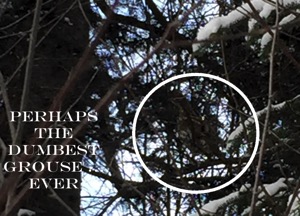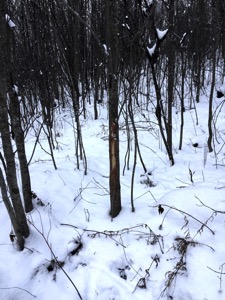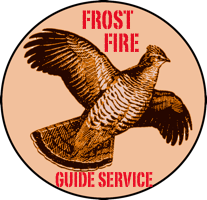Winter in the Uplands
In other words, it is officially winter grouse hunting now, which is quite different from the hunting we do in early and then in late October. I have read that there are usually three different periods to the three-month grouse hunting season, and this depends upon the transformation of the cover due to changing weather. The "first season" is the early season, where the leaves are still on the trees, and the grouse are still enjoying the plethora of cover (vertical) and food sources that are available. They can be found anywhere and everywhere in the first couple weeks of October, making some of the flushes that we get particularly surprising.
The "second season" usually begins as the leaves start dropping in earnest, and the vertical overhead cover and some food sources start drying up. Grouse are usually found in the thicker areas in the last couple weeks of October and the beginning of November, and evergreen stands become more important to grouse as well. As the vertical cover recedes, the horizontal cover is desired by the birds - thick stands of spruce, and blowdowns become favorite spots for grouse to hole up during bad weather. When the weather's good though, the grouse are often out and about looking for greens (fern tips, raspberry leaves, etc.), if they're still available.
The "third season", or winter grouse hunting season, starts earlier up here than most places in New England, and you never know when it might rear its ugly head. Sometimes it's not until halfway through December, but most years, it is about the mid-point of November, as it is this year. Now the grouse are exclusively in the stands of spruce and evergreens, as all of the greens are either dead or buried under a blanket of snow, and their primary food source is buds and catkins from birch and poplar. Hunting at this time of year can be feast or famine - they aren't where they were even a month ago, so if you can identify the thickest spruce cover in the areas you like to hunt in October, it is likely to be holding grouse right now. Don't expect there to be grouse in each thick, dark area though - you can walk for quite a time and see very little … and then come in to a veritable bonanza of birds.


